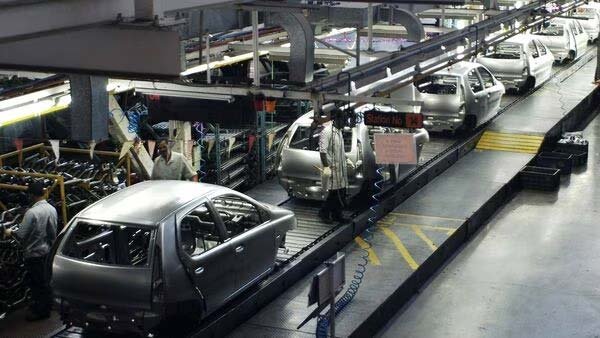This versatile and recyclable metal, although energy-intensive to produce, offers cost-effective solutions. Government incentives promoting decarbonized aluminium production in India could drive clean and sustainable development.
Leveraging Aluminium in India’s Infrastructure Growth
Aluminium has emerged as a sustainable alternative to timber in construction, reducing the need for tree felling. Its lightweight and tensile strength make it ideal for aircraft manufacturing and renewable energy projects.
In light of India’s increased infrastructure spending, the scope for expanding aluminium usage in these projects is a key consideration. The metal faces minimal competition in applications such as home window and door frames and aircraft manufacturing. Although it competes with steel in infrastructure projects, it excels in niche areas such as architectural structures and electric charging stations. Ultimately, aluminium presents a compelling case for completely replacing timber due to its recyclability and long-term cost-effectiveness, with minimal maintenance expenses.
Empirical data underscores the pivotal role of infrastructure in propelling growth, exerting positive multiplier effects across various sectors. Infrastructure development not only drives market demand and income, but also fosters trade, connectivity, financial inclusion, and societal equality. India’s substantial infrastructure buildup has positioned it as a rare ‘bright spot’ in the global economy, with the potential for further growth, aiming to reach $5 trillion from the current $3.75 trillion.
The imperative now is to build advanced, energy-efficient, cost-effective, aesthetically pleasing, and easily assembled infrastructure for the future. Embracing aluminium is central to achieving climate-resilient and sustainable infrastructure. With its infinite recyclability, superior eco-friendliness compared to steel and plastic, corrosion resistance, and high malleability, aluminium is an ideal choice for construction. According to the Indian Minerals Yearbook 2020, the electrical sector accounts for 48% of aluminium consumption in India, followed by the automobile and transport sector (15%), construction (13%), consumer durables (7%), machinery and equipment (7%), packaging (4%), and others (6%). Despite this, India’s per capita aluminium consumption remains at one-fourth of the global average.
Aluminium production requires a lot of energy, but it can use clean power for electrolysis. Currently, there’s no scalable substitute for this metal for India to achieve net-zero emissions by 2070. This transition towards cleaner energy is already in progress.
Aluminium is crucial across various sectors, like construction, automotive, and packaging. The global energy transition is expected to significantly increase the demand for aluminium. Additionally, the infrastructure sector’s growth will necessitate capacity expansion within the country.
While China leads in aluminium production and consumption, a shift in interest from the West towards India could provide an opportunity for Indian aluminium producers. This shift could help fill the gap created by China and also align with the ‘Make in India’ initiative. Despite a rise in domestic aluminium output, India continues to import significant amounts of low-quality aluminium scrap.
ICRA, a rating agency, highlighted that the Indian government’s extensive infrastructure development plans, urbanization, housing schemes, and investments in metro rail networks are positive indicators for domestic aluminium demand. Although global aluminium consumption is expected to remain subdued, Indian demand is projected to grow by 9% in 2023-24 and 2024-25.
The key challenge lies in increasing supply. This would require a consistent supply of high-quality raw materials and efficient processing and distribution networks. Furthermore, efforts are needed to decarbonize the entire value chain of extraction and production. Alumina, which is used to make aluminium, is derived from bauxite. To extract one tonne of alumina, 3-3.5 tonnes of bauxite are needed, and approximately 2 tonnes of alumina are used to produce one tonne of aluminium.
India holds bauxite reserves, but issues related to access to mineral-rich areas, land acquisition, and environmental clearances need to be addressed to increase mining. Streamlining the allocation of bauxite mines and incentivizing producers to manufacture high-quality, climate-resilient aluminium should be prioritized. This would contribute to meeting the rising demand and aligning with environmental objectives.
In recent years, the domestic aluminium industry has been facing challenges due to the increasing inflow of low-quality imports. This has raised concerns about the sector’s investment and growth prospects. If this trend continues unchecked, India’s production capacity may not be able to meet the growing demand, leading to a higher dependency on imports. To address this, it is crucial to support domestic producers and curb the surge in low-quality imports.
To enhance the domestic aluminium industry, it is essential for the sector to embrace new technologies that facilitate decarbonization of production processes. Moreover, incentivizing the industry to adopt green energy for aluminium production can be achieved through the introduction of a Production-Linked Incentive scheme by the government.
A parliamentary standing committee emphasized the necessity of taking a comprehensive view of the aluminium sector’s performance. The committee highlighted the industry’s failure to achieve production levels in line with its installed capacity. The government was urged to exert additional efforts to enhance the industry’s physical performance, enabling the country to become self-reliant in aluminium production.
Aluminium, known for its numerous advantages, warrants support to reduce dependency on imports and promote the utilization of indigenous products. Exploring new niche applications for aluminium can further contribute to its sustainable growth within the domestic market.











